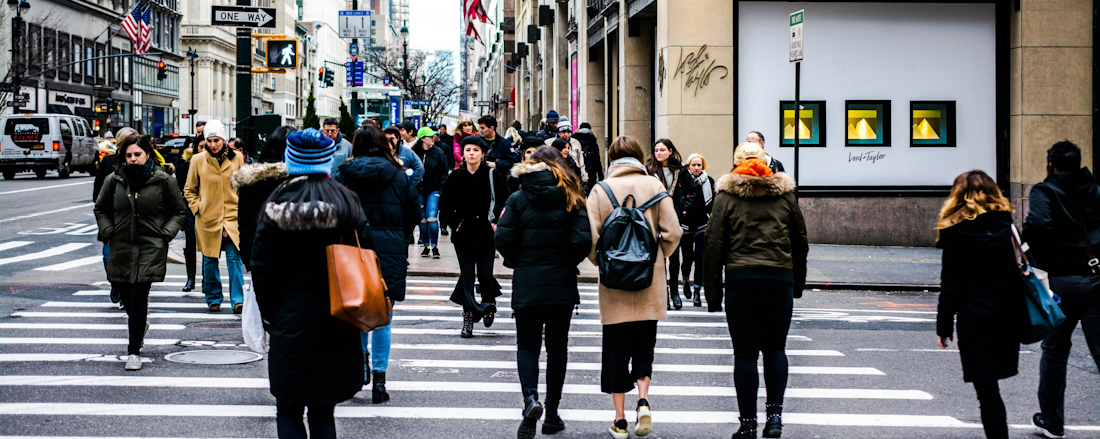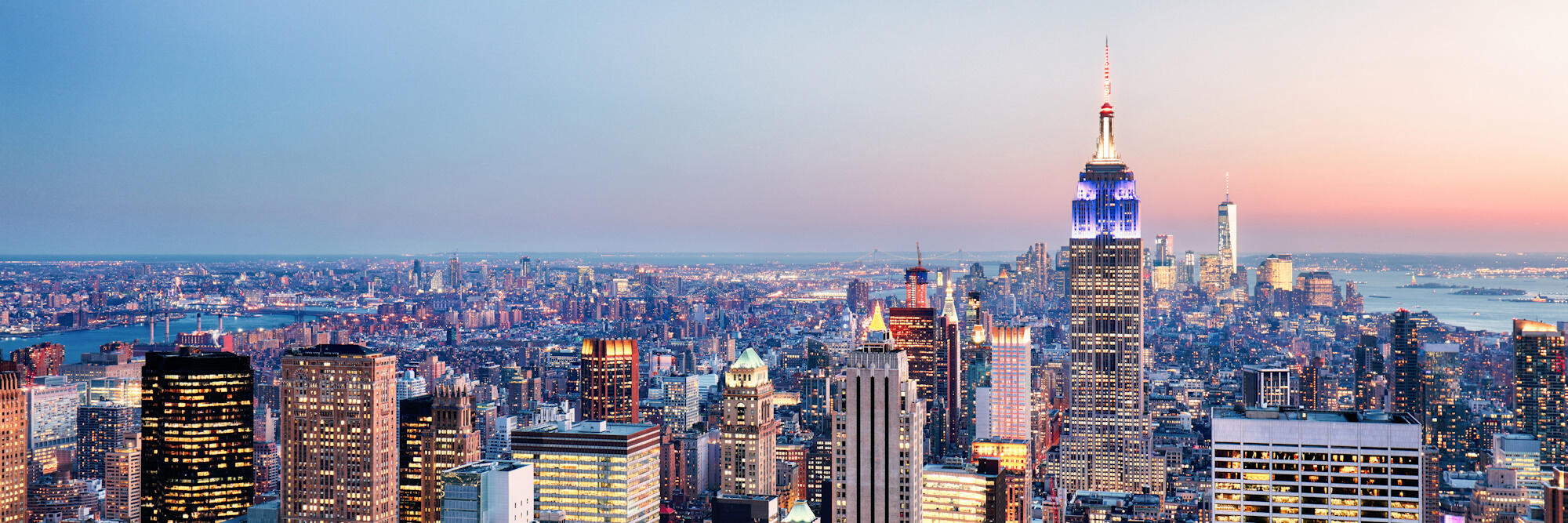- Download our New York City Schools Guide
- Download our Moving to New York City Guide (PDF)
New arrivals will find that Manhattan, the most densely populated of New York City’s five boroughs, is undoubtedly pedestrian-friendly; even if you need to zip from point A to point B, plenty of public transport is available. Having a car in Manhattan is also unnecessary, which can be more of a hindrance than a help due to limited parking.
It’s more common to have a car if you live in the outer boroughs of Brooklyn, Staten Island, Queens, and the Bronx. Although these areas are covered by public transport, travel times can be long and tiring.
Public transport in New York City
New York City has an integrated public transport network operated by the Metropolitan Transportation Authority (MTA). The contactless OMNY system is now the primary way to pay for subway and bus travel, so commuters can tap their smartphones, wearable devices, or contactless credit and debit cards. The older MetroCard system remains available but is being phased out – sales end in December 2025, although existing MetroCards can still be used until the end of 2026.
Both cards can be used on buses and subways, and users can load credit or unlimited travel passes onto them. MetroCards can be purchased and reloaded at selected grocery shops, station booths or vending machines, while OMNY works instantly with contactless payments. Passengers can also pay for bus fares in exact change.

Subway
The subway in New York City operates around the clock and is by far the fastest way to get around the city. New York City’s subway network is extensive and efficient, with over 470 stations across the five boroughs. Services run every few minutes, so there’s no need to spend time studying the schedule in detail. There are also express subway services that do not stop at some smaller local stations.
The subway is generally a safe and comfortable way to travel. That said, trains tend to be crowded during rush hour, and passengers should use common sense when travelling alone at night. Violent crime is rare, but petty theft does occur. Using busier stations and keeping valuable items hidden are good basic precautions.
Buses
Despite New York City’s dense subway network, buses remain an excellent alternative for getting across the city. Buses are an ideal way to comfortably travel around the city while taking in some of New York City’s incredible sights. Naturally, this is best done outside peak hours.
Express buses travel between Manhattan and the outer boroughs and often serve areas that aren’t sufficiently covered by the subway network. Express bus services are slightly more expensive than regular services.
Overnight bus drivers will typically stop wherever passengers ask, provided the area is safe. The major downside to using buses in New York City is that they are often delayed due to traffic congestion.
Commuter trains
New York City is served by three commuter railroads, which operate through the major hubs of Penn Station and Grand Central Station. These train lines serve destinations further away from Manhattan and are a good option for regional travel.
Ferries
New York City has an extensive ferry system thanks to its waterfront location. The Staten Island Ferry is a free and picturesque way to travel between Staten Island and Manhattan’s Whitehall ferry terminal, with views of the New York City Harbour and the Statue of Liberty. The NYC Ferry and NY Waterway have multiple stops along Manhattan, Brooklyn, Queens, the Bronx and Staten Island; these ferry networks serve as one of New York City’s most extensive water transport systems.
Metropolitan Transportation Authority (MTA)
Taxis in New York City

The fabled yellow taxi cabs are among the many little pleasures of New York City life. These famous icons are omnipresent and ready to whisk people off through the avenues and streets to their next appointment without the stress of an around-town subway ride. They operate on a running meter that charges based on distance and time, and can be the most efficient and reasonable option when travelling in groups, but expensive if travelling alone. Always ensure the meter is reset at the start of a journey, and new arrivals needn’t worry about carrying cash, as all taxis accept card payments.
Ride-hailing apps such as Uber and Lyft are also operational in New York City, although recent studies suggest yellow cabs are often more affordable for shorter trips, especially with the introduction of congestion pricing surcharges that are higher for ride-hailing services.
Useful links
Cycling in New York City
While cycling in New York City often beats most other forms of transport when it comes to getting around, it’s not for the faint-hearted. New York City’s heavy traffic, aggressive taxi drivers, jaywalking pedestrians, and endless roadworks make cycling in the city difficult. Despite these hazards, it’s common for New Yorkers to commute to work by bike on a daily basis, and the city is taking steps to improve infrastructure for cyclists.
The network of cycle lanes is expanding, although progress has been slower than mandated – the city has installed less than half of the required protected lanes than they were required to by now. Cycle storage facilities are also increasing, with plans for secure bike parking at 500 locations. There is also a bicycle-sharing scheme known as Citi Bike, which is constantly expanding to new neighbourhoods.
Useful links
Walking in New York City

Walking in New York City is frequently the most practical way to cover short distances, especially in Manhattan’s uncomplicated grid system. Due to the city’s compact layout, many attractions, restaurants, offices, and business districts are within easy walking distance of one another. Neighbourhoods like Greenwich Village, SoHo, and the Upper East Side are especially pedestrian-friendly with wide pavements and manageable traffic.
Driving in New York City
While it really isn’t necessary to drive in New York City, a number of people still choose to own a car. If you opt to drive in New York City, you should be aware of some of the finer details of driving in the Big Apple. While foreigners are initially allowed to drive in New York City with an international driver’s licence, you must apply to exchange your licence for a local one after becoming a legal resident in the state.
Being aware of parking restrictions in New York City is essential because fines are hefty. Worse still, if your vehicle is impounded, you’ll have to pay a large sum to have it released. Parking in New York City often involves renting a space in a parking garage, many of which have long waiting lists and charge exorbitant fees, so it’s well worth researching parking options to find something suitable. Parking on the street usually requires you to pay at a parking meter.
Driver’s licences
If you’re moving to New York permanently, you’ll need to exchange your foreign driver’s licence for a New York State licence within 30 days of becoming a resident.
The process varies depending on your country of origin. UK licence holders can exchange directly without taking a test, while other nationalities may need to pass both written and practical driving tests. You’ll need to visit a Department of Motor Vehicles (DMV) office with your current licence, proof of identity, Social Security number, and proof of New York residency. The process can take several hours, so it’s worth booking an appointment online beforehand.
